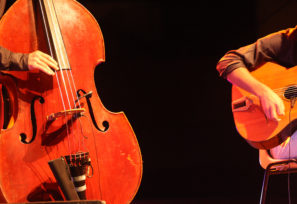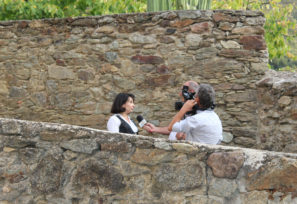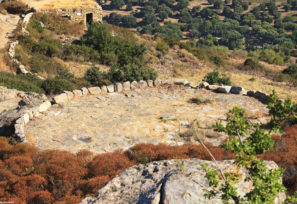Corsican polyphony draws its roots from the very soul of our island. Its emergence dates back to ancient times when the songs of shepherds echoed from the mountains to the valleys. Influenced by Mediterranean cultures and liturgical chants, the island’s polyphony has evolved over centuries to become an artistic expression, infused with Corsica’s tumultuous history. This tradition nearly disappeared after World War II due to human losses and the depopulation of villages. It has once again found its place thanks to the ‘Riacquistu’ movement, aimed at preserving and revitalising Corsican culture, which breathed new life into polyphony. This artistic practice has thus become the flag-bearer of Corsican identity, a means of transmitting the history and aspirations of these people. In 2009, Corsican polyphony was consecrated by its inscription in UNESCO’s Intangible Cultural Heritage of Humanity.
As far back as this oral island tradition goes, polyphony set the rhythm of the inhabitants’ daily life. The earliest lullabies like “Ninni nanna” or “Ciuciarella,” the most beautiful love serenades like “Furtunatu” or “les Paghjelle,” pastoral songs, were moments of sharing and gatherings around a language, a song, an emotion. There are also the “Lamenti,” songs imbued with pain and sorrow; work and exile songs that carry the nostalgia of lands left behind; the “Chjam’è Rispondi,” sung and improvised verbal jousts where the quick-witted repartee combines with the cunning of poets.
Corsican polyphony draws its strength from the diversity of intertwining voices. Three distinct voices shape this sonic mosaic: A Seconda, considered the main voice, evokes a melody to which the other voices add harmony; A Terza, which provides expressive nuances to the main voice, creating a complex and emotional sonic texture; U Bassu, as its name suggests, provides the low notes that anchor the polyphony and bring depth and resonance to the composition. These three distinct voices can be used by more than one singer, which is why some groups may have more than three members.
Although polyphony is primarily a cappella, carefully chosen instruments harmoniously complement the voices, such as the Cetera, a three-stringed plucked instrument.
The gestures of the singers, equally captivating, also give rhythm to the polyphony. Adopting a close circle position, they create close communication between the singers and the voices, reinforcing musical cohesion.
A distinctive gesture often accompanies polyphony such as placing the hand on the ear. This gesture is not just a visual element but an essential technique. Singers can fold their ear inward to better hear their own melody or open it to immerse themselves in the overall harmony of the song.
Polyphony, with its distinct voices and unique practices, is undoubtedly an immersive musical art deeply rooted in the history and culture of our beautiful island. It is this enchanting spectacle in the heart of Lisula’s most beautiful churches that the Corsican polyphonic groups invite you to discover throughout the year.








